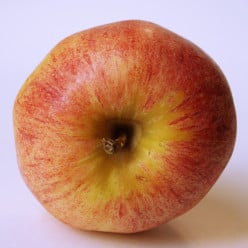I asked the Question!
Could you tell me definitively if I should add a Caption to the images in my Tutorials?
Staff gave the reply:-
You don't have to but it helps your images be found in Google Image Search which can drive a lot of traffic, especially on craft articles where people want to see images.I agree. Just note that the answer relates to CAPTIONS, which is the wording that shows UNDER your photos. Not the HEADINGS which is the wording that shows ABOVE the photos.
If I can "hijack" your question Sally, I would also like to know whether capsule sub-titles should be added to photo capsules? Sometimes a caption is sufficient if nothing much has to be said about a photo, and adding a capsule sub-title seems like duplication?
If you happen to want an H2 header at that point in your article why not use a caption header? On the other hand, I would be wary of using too many keywords in too many H2 headers.
I tend to agree which is why I posed the question. I got the feeling that sometimes it looks like keyword stuffing but if you did not fill it in, there was a gap where a heading was being asked for! I just thought it was there to be filled in but it does not always look great.
Glad it helped, although I obviously meant to say picture capsule header, lol. They bury the captions somehow.
Congrats on the award, by the way.I think the point we were making on your Hub was that, if you look at them, the headings on photos look exactly the same as the main headings in your text.
If you're writing a long article and someone is trying to find the right section by looking at your headings, then having the same headings on the photos gets awfully confusing.
I agree, eubug. I have come to the conclusion that if the photo has no info written below it, I am inclined to add one above. Sometimes adding both seems a little too much and I was pretty much guilty of doing that in all my earlier hubs so I am testing my hubs with one below and not one above. Think it depends on the subject matter that you are writing about as well.
.It's important to realize the difference between these two fields from an SEO perspective.
Here on HP our image captions also serve as image alt tags. These tell a search engine what's in the image, and that's why staff said you can get traffic to the Hub by the images appearing in search. But, if you want that traffic, it helps to use a descriptive caption for the image.
The image title is an H2 header tag, the same as on our text capsules or any other capsule for that matter. I try to avoid using H2s for capsules like images and amazon, etc, because too many H2 tags with the same keywords can sometimes be seen as stuffing (as Will said). To sidestep the issue altogether, I try to stick with a limited number of H2s in any one Hub.
So, image titles and captions are not interchangeable, as far as search engines are concerned. Knowing how search engines see them can help you better decide how and when to use them.
Related Discussions
- 24
Pixabay Or Own Images?
by Hansaveda 12 years ago
Is anybody using pictures from pixabay or using own images? What is better?
- 19
An Interesting Experiment With Photo Upgrades
by Sondra Rochelle 10 years ago
After reading the forums about using wide capsules and carefully captioning each one, I went back yesterday to the first four or five hubs I published and upgraded them. I widened the first photo, where possible, and wrote a more pertinent caption, and did the same with all the...
- 9
Understanding Stock Photo Sites
by Eric Dockett 11 years ago
I've always chosen my Hub images carefully, from sources that offer appropriately licensed images or public domain images.Lately I've been getting suspicious of a few of my sources. Sometimes when I do a Google image search it turns up the same image on multiple stock photo sites in addition to the...
- 9
Are your images pixelated?
by Glen 14 years ago
I see a lot of people are getting flagged for this. I'm unsure of the exact message or if it suggests how to fix it.But if you are going to adjust the width of the image capsule (toggle width right) so the text will wrap around it, you need the image to be at least 260 pixels wide.If it's going to...
- 16
Can we use Google Images on our hubs?
by carol stanley 12 years ago
Can we use Google Images on our hubs?I see many hubs with google images and yet I heard we are not supposed to use them.
- 20
can ı use a picture obtained from google image search at my hub?
by ofmelancholy 15 years ago
Picture covers bon jovi by the way.










